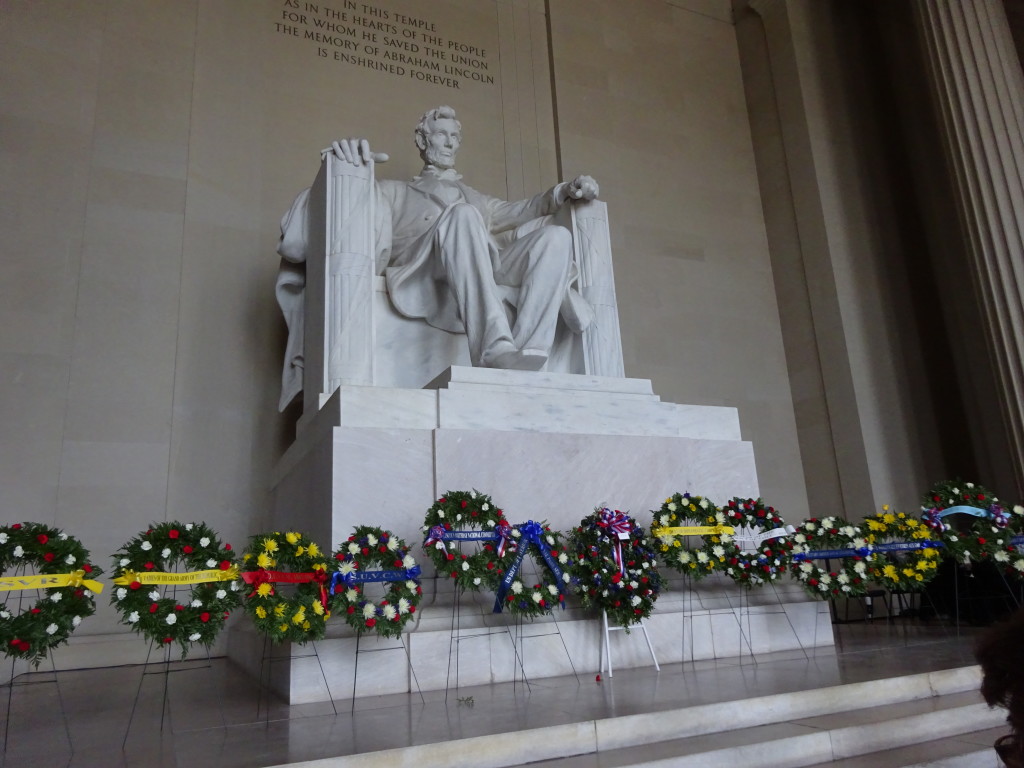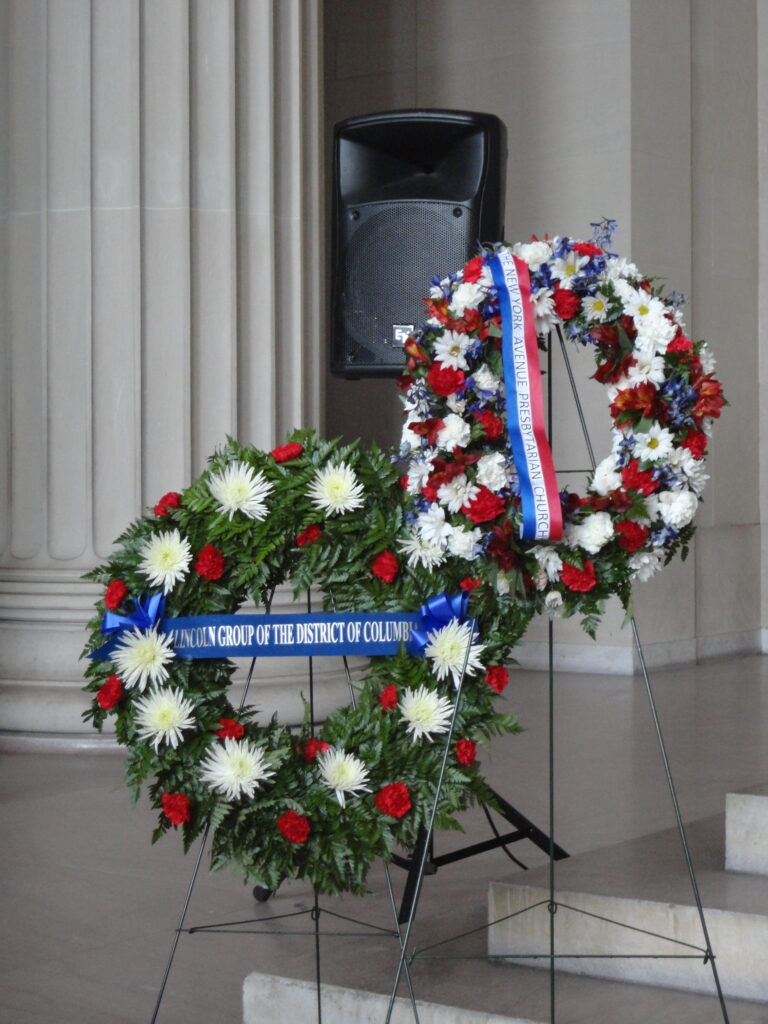Last week I traveled to Lincoln’s Illinois to visit many of the places Abraham Lincoln lived and worked. Mid-week I posted the highlight summaries I had prepared for the Lincoln Group of DC. Today I’m posting Part II – the highlights for the rest of the week. See Part I for the first few days of the trip.
Day 3
Springfield, Illinois. Home of Abraham Lincoln for most of his professional career. And today was mostly (but not exclusively) about the Abraham Lincoln Presidential Library and Museum, one of the most visited Presidential Museums ever. Not bad for a guy who has been dead for 151 years.

The morning was spent at the Museum portion. Those who have seen museum after museum and think they’ve seen it all are in for a treat because this was like no museum I’ve ever been in. We started with a multimedia video presentation of “Ghosts in the Library” that highlighted the preservation and collections process. A “curator” told us about the discoveries while “ghosts’ of Lincoln, soldiers, and others floated into and out of the action. In the end we were left with both an appreciation of what historians do, and confusion as to whether the curator was real or a holographic image. We still don’t know.
This was followed by a second video-esque presentation of the history of the war and of Lincoln’s actions. Then we started on the main exhibits. Beginning with Lincoln in his log cabin, we experienced the cramped quarters of a one-room log cabin with Lincoln reading against the firelight while one of his kinsman snores in the loft above. From here we followed through his early life up to the time he runs for president. Entering the White House section (with a certain John Wilkes Booth lurking in the shadows), we pass by Mary Lincoln’s dresses and Lincoln’s road to the presidency, including what appears to be a modern day newscast with Tim Russert (of Meet the Press) reporting on the “four way race” for the presidency (replete with campaign ads). The museum did a fantastic job of presenting the material in a fresh and interesting way.

After a quick lunch at the Feed Store (where Lincoln used to pop in from his law office next door), we met at the Presidential Library where curator James Cornelius gave us all a once in a lifetime, up close and personal, look at some first hand artifacts. Among them were handwritten letters by Lincoln, Mary, Elizabeth Keckly, and Edward Everett, plus a compass and sundial that belonged to Lincoln’s grandfather, and several other one of a kind artifacts. The most intriguing to all of us was the “Everett copy” of the Gettysburg Address in Lincoln’s handwriting as presented to Everett to be sold (along with his handwritten 2-hour Gettysburg speech) as a fundraiser for the U.S. Sanitary Commission.
But our day wasn’t over. Our next stop was the Vachel Lindsay Home. Lindsay was a poet whose most famous poem was called “Abraham Lincoln Walks at Midnight,” which was marvelously orated by our very own LGDC President John Elliff. From here we walked to the Elijah Iles House. Iles was probably most responsible for the development of Springfield. It was here that LGDC members enjoyed a reception with ALA President Kathryn Harris and many other ALA, Illinois State Archives, Abraham Lincoln Presidential Library and Museum, and ALA Journal Editors.
We ended the day on our own for dinner, during which some of us enjoyed the local brews at the locally famous Obed & Isaac’s, followed by some fantastic guitar and fiddle playing at, of all places, a local antique shop called “Abe’s Old Hat.”
For those following along, yes, this was yet another amazing day on our tour of Lincoln’s Illinois. And we have two more days to go.
Day 4
Mary Todd courted both Abraham Lincoln and Stephen A. Douglas on a couch in the home of her sister, Elizabeth Edwards (Note: Not at the same time). That “courting couch” is now in the Benjamin Edwards house in Springfield – and our esteemed traveling Lincoln Group of DC members got to see it today. The incredibly knowledgeable curator of Edwards Place, Erika Holst, guided us through the amazing history of the Edwards family. The Lincoln’s were regular visitors to the house, often listening to Mary’s sister play the piano; in fact, it turns out our LGDC President was closely guarding a secret. After our tour we all gathered back in the parlor where Jane Hartman Irwin sat down and played several tunes that Lincoln likely heard, and on the very same piano on which he heard them.
After many LGDC members purchased books and CDs of our experience there, we headed off to the Old State Capitol building (where, incidentally, Barack Obama held both his initial announcement of running for president and his introduction of running-mate Joe Biden). We received an amazing tour of the Capitol building from Stephanie, including the office where the newly elected Lincoln began his search for cabinet members. This was followed by a working lunch/meeting with Sarah Watson, Director of the “Looking for Lincoln” National Heritage Area project. Sarah was instrumental in helping for the planning of this trip.
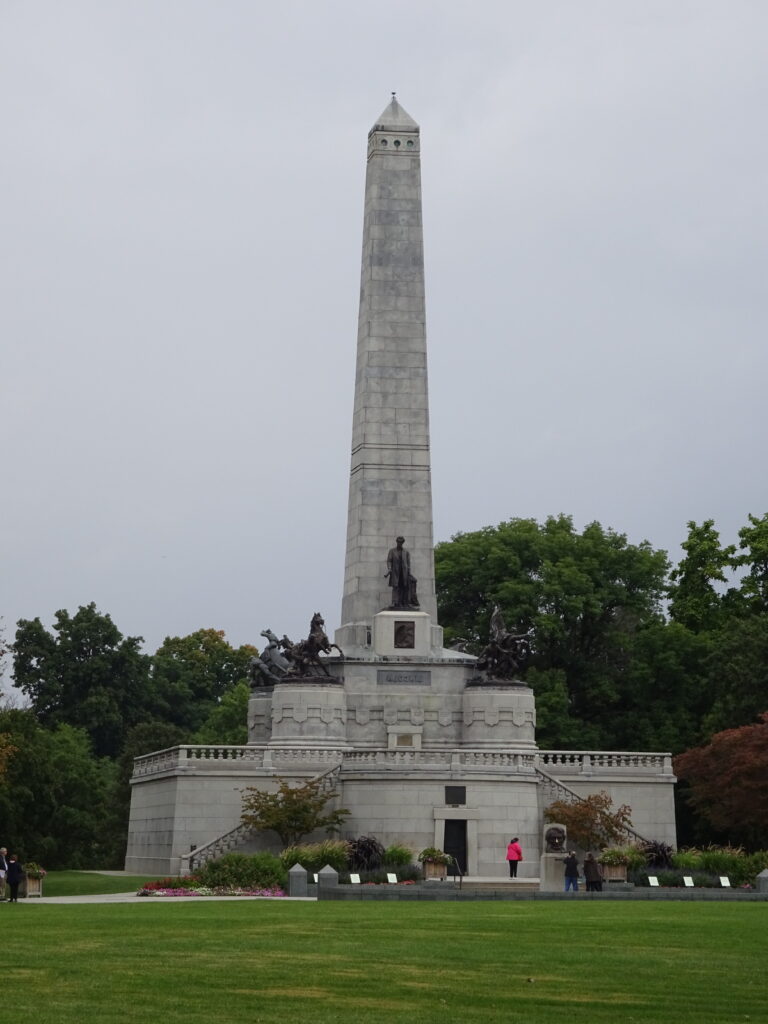
And then it was to the Lincoln Tomb, which was a somber thrill for all of us. The tomb, obelisk, and statuary dominates the Oak Ridge Cemetery, and rightfully so. Our guide provided a great deal of history of the tomb and its inhabitants, the entire Lincoln family with the exception of Robert, who is buried in Arlington National Cemetery in Arlington, VA. The tomb is imposing by all definitions of the word. Only a short walk away we visited the African American History Museum (AAHM), where we once again met up with Kathryn Harris, President of ALA, in her other role as Board member of AAHM.
 But our day still wasn’t over. Our next stop was a whistle stop, or more accurately, the Great Western Depot where President-Elect Lincoln gave his farewell address to the people of Springfield, or those of whom had come out in a misty rain to see him off on his long journey to Washington and his first inauguration. Abraham Lincoln himself (Randy Duncan to his friends) was there to recite his goodbye address. A few hours later (trains must have run a lot faster in those days), Mr. Lincoln joined us on the eve of his inauguration at local eatery Maldaner’s and gave us some insights into “tomorrow’s” speech. He also took questions, as well as interviewed many of us for potential cabinet positions and patronage jobs (I asked to be named environmental minister).
But our day still wasn’t over. Our next stop was a whistle stop, or more accurately, the Great Western Depot where President-Elect Lincoln gave his farewell address to the people of Springfield, or those of whom had come out in a misty rain to see him off on his long journey to Washington and his first inauguration. Abraham Lincoln himself (Randy Duncan to his friends) was there to recite his goodbye address. A few hours later (trains must have run a lot faster in those days), Mr. Lincoln joined us on the eve of his inauguration at local eatery Maldaner’s and gave us some insights into “tomorrow’s” speech. He also took questions, as well as interviewed many of us for potential cabinet positions and patronage jobs (I asked to be named environmental minister).
It was a long day, but a productive one. Tomorrow includes our visit to New Salem.
Day 5
Our final day on the Looking for Lincoln tour. It has been a fantastic experience all week, and the last day was more of the same…plus some surprises.
We started at the Illinois State Capitol. Yesterday we were at the Old State Capitol where Lincoln (more or less) was a state legislator. Today was the “New” Capitol building where the current Governor, Attorney General, and legislature meets (in keeping with Washington DC precedent, no one seemed to be working today). David Joens, who is both Director of the Illinois State Archives and Vice President of the Abraham Lincoln Association, gave us a wonderful tour of a truly magnificent building. As might be expected, there were many representations of Lincoln (and that other famous Illinois guy, Stephen A. Douglas) throughout the building. Paintings of the two overlook their respective Republican and Democratic sides of the House chambers.

From there we visited the Dana Thomas House, and we found our first (minor) surprise. We chose the house solely because it was designed by Frank Lloyd Wright, not because of any connection to Lincoln, and it was there. Well, it turns out the house often hosted musicians, writers, and poets. Two common guests were Vachel Lindsay, author of the poem “Abraham Lincoln Walks at Midnight” (where we visited on Wednesday), and Carl Sandburg, another poet but probably best known for his multivolume series on Lincoln, “The Prairie Years” and “The War Years.”
Up next was lunch and a tour of New Salem, the village where Lincoln lived when he first started out on his own. Our guide was Jim Patton, who was lead interpreter of New Salem for many years but came out of his comfortable retirement to personally take us around. Being able to immerse ourselves in village life, seeing the kind of one-room log cabins everyone lived and work in, and checking out the saw and grist mill where Lincoln sometimes worked was an exhilarating experience.

Then we received our first huge surprise. Driving into Athens (pronounced AY-thens) we expected only to wave at the Long Nine Museum that we thought was closed. As the bus pulled up to the side of the building, out comes running (okay, walking) 84 year old John Eaton, the owner of the museum. Seems he was just there to check some things out and suddenly our bus pulls alongside. This was an unexpected treat. “The Long Nine,” for those who don’t know, was the nickname given to the nine Representatives from Sangamon County, all of whom were over 6 feet tall. The museum had many artifacts related to Lincoln’s time there, plus a series of dioramas denoting aspects of Lincoln’s life in the area. When we left, John Eaton (who was as surprised as we were) told us we “made his day.” He most certainly made ours.
This unexpected stop put us a bit behind schedule, but we moved on to see prairie grass as Lincoln saw it when he arrived, then drove on to the nearby Funk’s Grove. Since this final stop was supposedly going to replace the Long Nine we really didn’t have much of an expectation. They did have a small Lincoln document collection, but we were all absolutely delighted to find an even bigger connection to Lincoln. It turns out the patriarch, Isaac Funk, was a close friend not only of Abraham Lincoln but of David Davis, Jesse Fell, Asahel Gridley, and other key figures in Lincoln’s life on the circuit. In fact, Davis invited Isaac Funk up to the Wigwam in Chicago that nominated Lincoln to the presidency. Isaac also gave a hugely controversial (and blunt) anti-Copperhead speech during his wartime service in the Illinois legislature. The Funks were definitely ahead of their time as they founded the first land grant college in Illinois, electrified the house in 1910, long before anyone in the midwest knew anything about electricity (Isaac’s grandson Deloss had personal consultations with both Tesla and Edison), taught the latest in farming and agriculture, and were pioneers in the development of hybrid corn, wheat, and other better producing crops.
Phew. We had a week packed with activities, following Lincoln around central Illinois. Many thanks to John and Linda Elliff, Bob Willard, and others who helped plan a fantastic trip. Everyone heads back home to DC where we’ll begin planning the next experiences for the Lincoln Group of DC.

Lincoln: The Fire of Genius: How Abraham Lincoln’s Commitment to Science and Technology Helped Modernize America is available at booksellers nationwide.
Limited signed copies are available via this website. The book also listed on Goodreads, the database where I keep track of my reading. Click on the “Want to Read” button to put it on your reading list. Please leave a review on Goodreads and Amazon if you like the book.
You also follow my author page on Facebook.
David J. Kent is President of the Lincoln Group of DC and the author of Lincoln: The Fire of Genius: How Abraham Lincoln’s Commitment to Science and Technology Helped Modernize America and Lincoln: The Man Who Saved America.
His previous books include Tesla: The Wizard of Electricity and Edison: The Inventor of the Modern World and two specialty e-books: Nikola Tesla: Renewable Energy Ahead of Its Time and Abraham Lincoln and Nikola Tesla: Connected by Fate.
Like this:
Like Loading...
 The Lincoln Group of DC is one of the premier Abraham Lincoln associations in the country and I feel privileged to be a part of the executive board. This post highlights some of the upcoming events in the DC area that you don’t want to miss.
The Lincoln Group of DC is one of the premier Abraham Lincoln associations in the country and I feel privileged to be a part of the executive board. This post highlights some of the upcoming events in the DC area that you don’t want to miss.


 A shocking
A shocking 
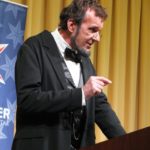 Abraham Lincoln was sworn in as the 16th President of the United States during a time of great upheaval. His first inaugural address was long (his second would be much shorter) and delved into the crisis that was causing the nation to split.
Abraham Lincoln was sworn in as the 16th President of the United States during a time of great upheaval. His first inaugural address was long (his second would be much shorter) and delved into the crisis that was causing the nation to split.




 On January 18, 2017, in celebration of the Old Naval Hospital’s 150th anniversary, Hill Center and the Lincoln Group of the District of Columbia will hold a celebration of Abraham Lincoln’s First Inaugural Address. In 1864 President Lincoln authorized $25,000 for construction of the (Old) Naval Hospital, which was completed in 1866, and the building has been restored to its 1860s condition to serve as Hill Center.
On January 18, 2017, in celebration of the Old Naval Hospital’s 150th anniversary, Hill Center and the Lincoln Group of the District of Columbia will hold a celebration of Abraham Lincoln’s First Inaugural Address. In 1864 President Lincoln authorized $25,000 for construction of the (Old) Naval Hospital, which was completed in 1866, and the building has been restored to its 1860s condition to serve as Hill Center.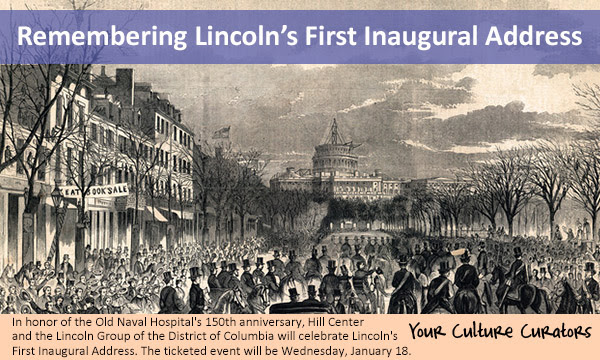
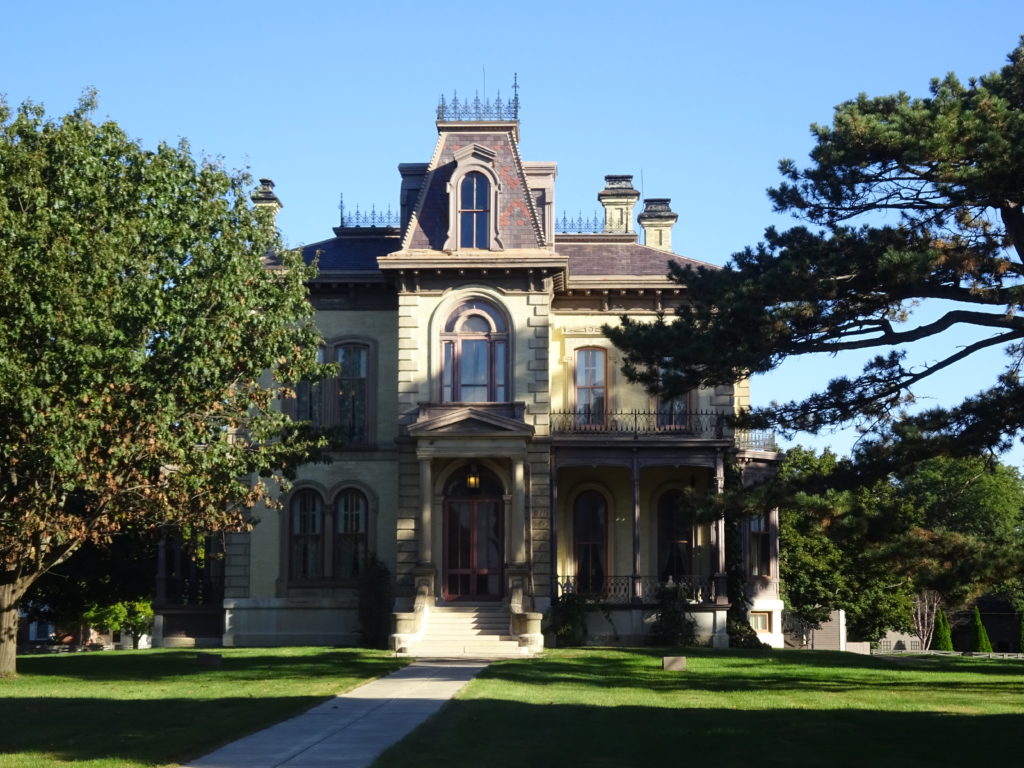
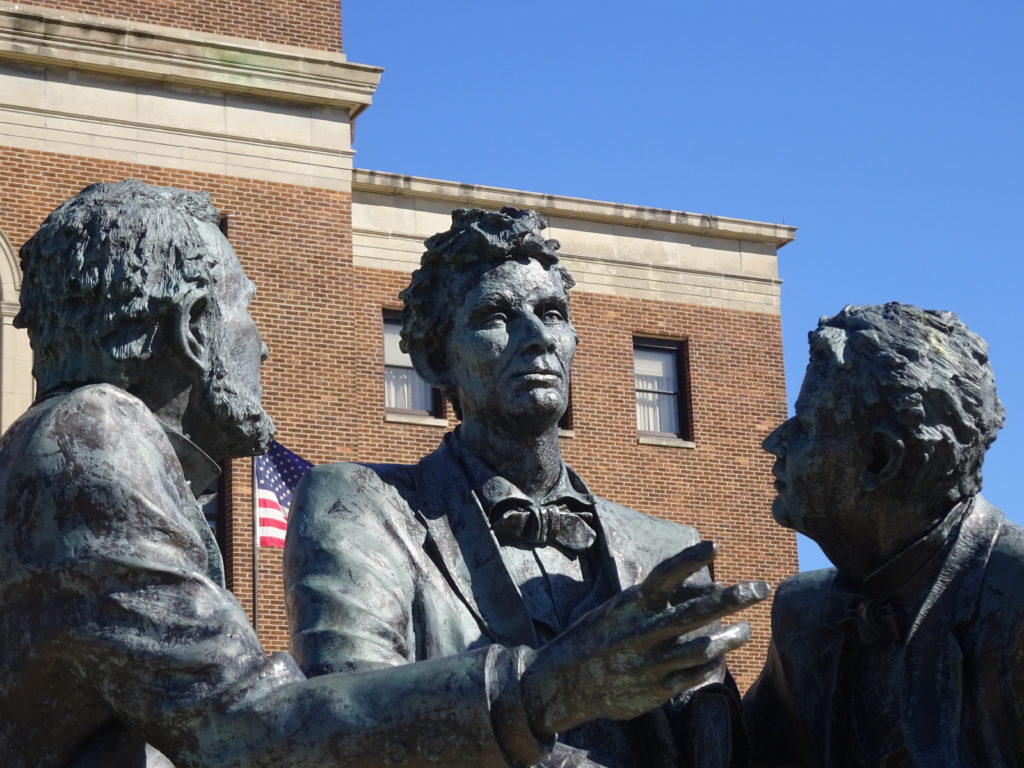
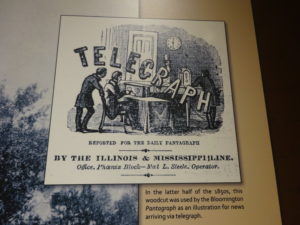
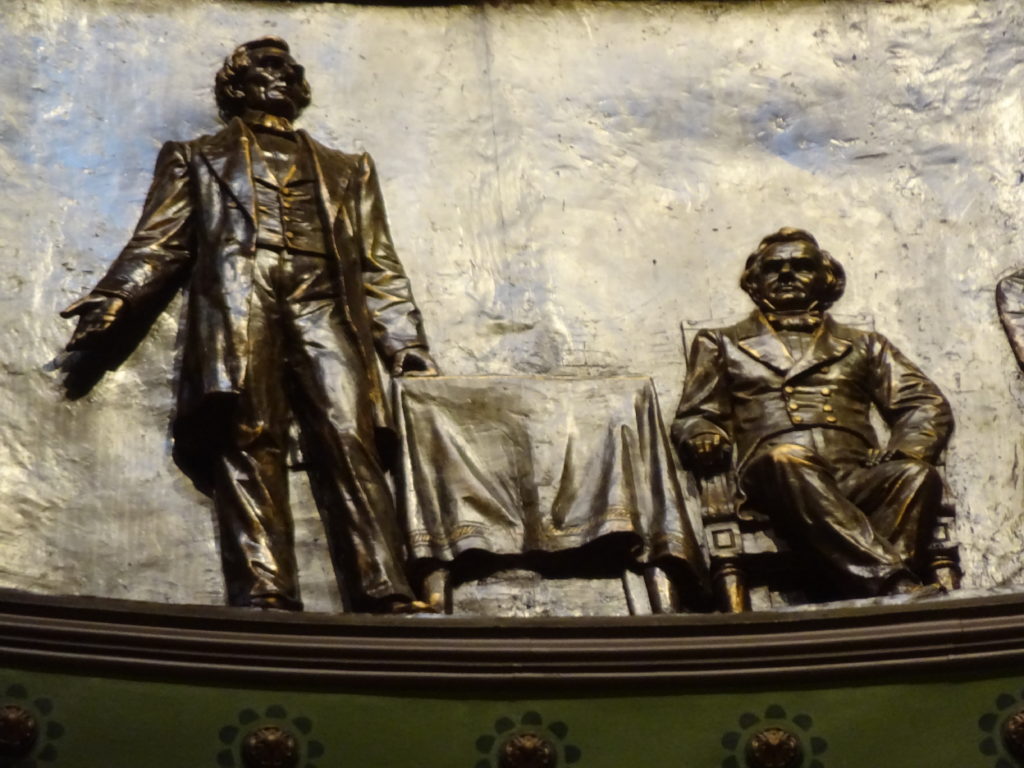



 But our day still wasn’t over. Our next stop was a whistle stop, or more accurately, the Great Western Depot where President-Elect Lincoln gave his farewell address to the people of Springfield, or those of whom had come out in a misty rain to see him off on his long journey to Washington and his first inauguration. Abraham Lincoln himself (Randy Duncan to his friends) was there to
But our day still wasn’t over. Our next stop was a whistle stop, or more accurately, the Great Western Depot where President-Elect Lincoln gave his farewell address to the people of Springfield, or those of whom had come out in a misty rain to see him off on his long journey to Washington and his first inauguration. Abraham Lincoln himself (Randy Duncan to his friends) was there to 

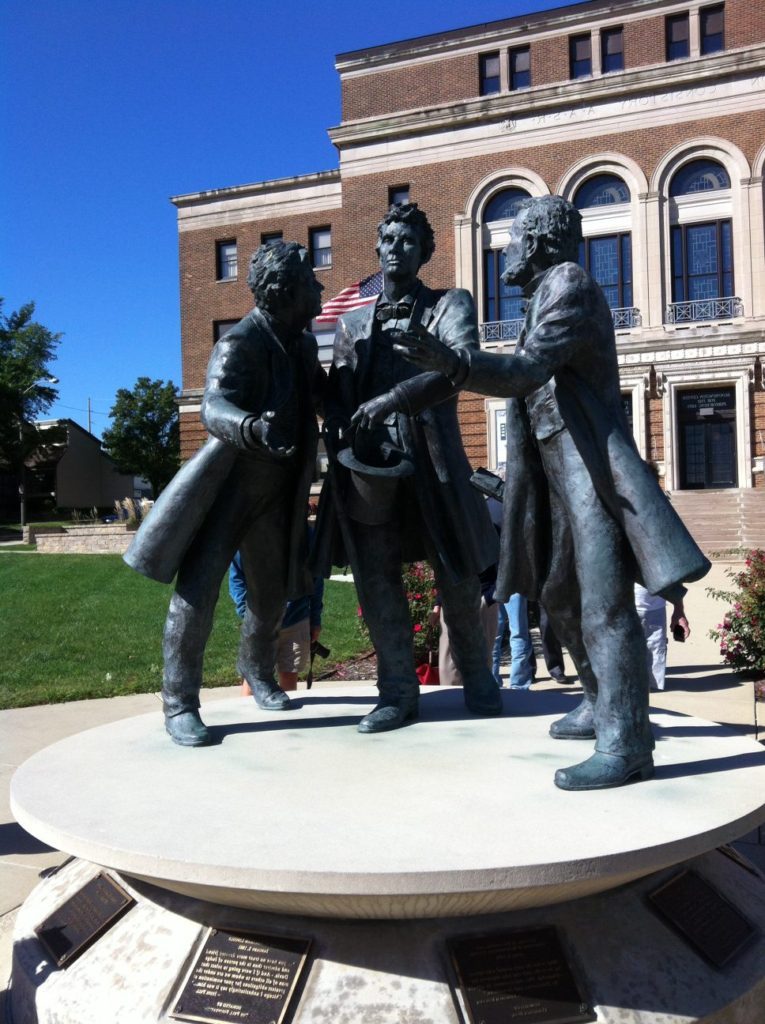
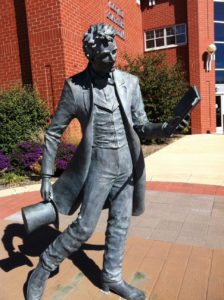 Our second full day began at the Lincoln Heritage Museum on the campus of Lincoln College in, Lincoln, Illinois, of course. We were greeted by Director Tom McLaughlin and Assistant Director and Curator Anne Mosely, who gave us a primer on the museum. The first floor was a standard museum format, with a series of d
Our second full day began at the Lincoln Heritage Museum on the campus of Lincoln College in, Lincoln, Illinois, of course. We were greeted by Director Tom McLaughlin and Assistant Director and Curator Anne Mosely, who gave us a primer on the museum. The first floor was a standard museum format, with a series of d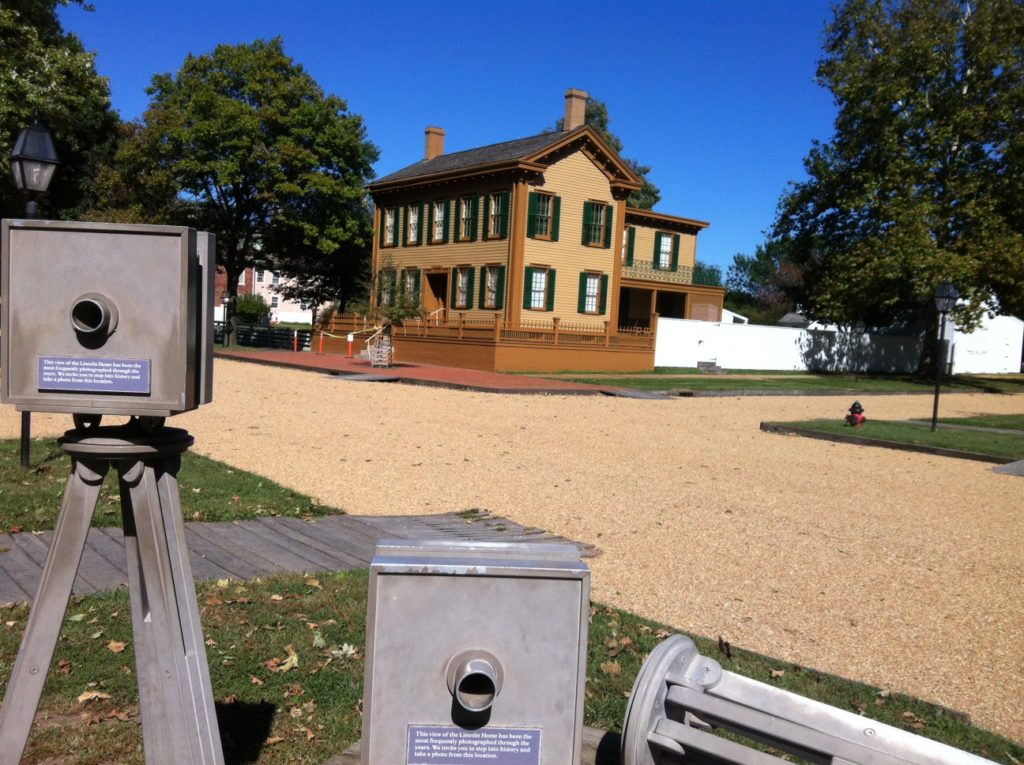
 Seven score and sixteen years ago the United States experienced a contentious election. The populace was terribly divided, one campaign openly pandered to the fears of white Americans, and the survival of the Union was in question. The winner of that election in 1860 was Abraham Lincoln, our 16th President.
Seven score and sixteen years ago the United States experienced a contentious election. The populace was terribly divided, one campaign openly pandered to the fears of white Americans, and the survival of the Union was in question. The winner of that election in 1860 was Abraham Lincoln, our 16th President.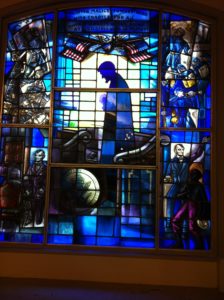
 As the current day political conventions get ready to officially name Hillary Clinton and Donald Trump as the Democratic and Republican nominees, it brings us back to when a relatively unknown Abraham Lincoln unexpectedly gained the nomination – and won the election – of 1860.
As the current day political conventions get ready to officially name Hillary Clinton and Donald Trump as the Democratic and Republican nominees, it brings us back to when a relatively unknown Abraham Lincoln unexpectedly gained the nomination – and won the election – of 1860.